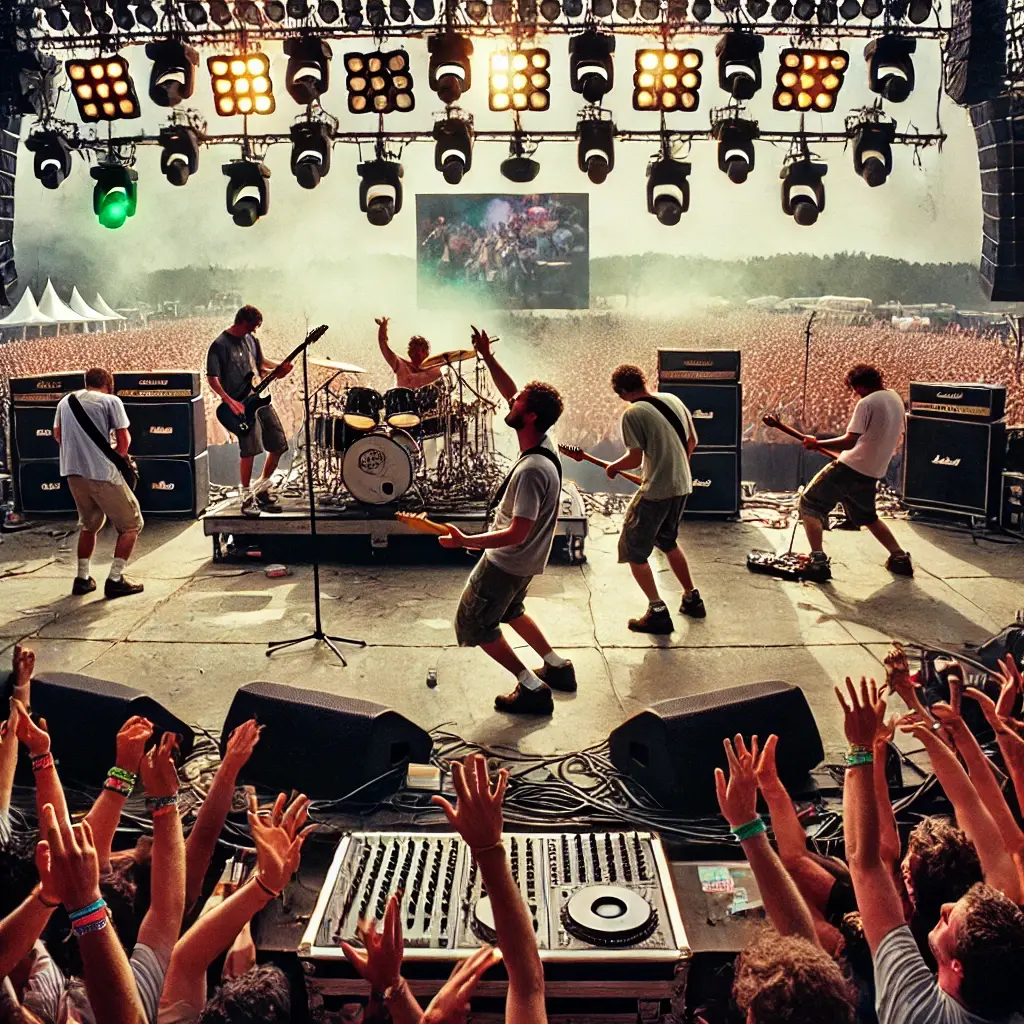Woodstock ’99, held from July 22 to July 25, 1999, was intended to celebrate the 30th anniversary of the iconic 1969 music festival. However, unlike its peaceful predecessor, Woodstock ’99, held in Rome, New York, became infamous for violence, fires, and riots. The festival exposed the dark side of what was meant to be a celebration of peace and music, leading to significant criticism regarding the event’s poor organization, high prices, and inadequate facilities. The chaos at Woodstock ’99 served as a cultural lesson on the complexities of festival management and the unpredictable nature of large gatherings.

The original Woodstock in 1969 symbolized the counterculture movement of the 1960s, embodying ideals of peace, love, and music. Organized by Michael Lang, Artie Kornfeld, Joel Rosenman, and John P. Roberts, it attracted over 400,000 attendees and featured performances by legendary artists such as Jimi Hendrix, Janis Joplin, and The Who. The festival’s success was attributed to its communal spirit and the relatively low-key and free-form organization that seemed to align perfectly with the ethos of the era.
In contrast, Woodstock ’99 was conceived as a commercial venture aiming to replicate the magic of the original while capitalizing on the booming music festival market of the late 1990s. The event was held at Griffiss Air Force Base, a sprawling site with miles of asphalt and limited shade. This choice of venue would later prove problematic, as the oppressive heat and lack of adequate facilities contributed to the festival’s descent into chaos.
The lineup for Woodstock ’99 was a mix of contemporary rock, nu-metal, and alternative bands, including acts like Korn, Limp Bizkit, Rage Against the Machine, Metallica, and Red Hot Chili Peppers. While the music drew large crowds, it also attracted a different audience compared to the peace-loving hippies of 1969. The aggressive and high-energy performances fueled an already tense atmosphere, exacerbated by the festival’s many logistical issues.
One of the most significant problems at Woodstock ’99 was the lack of adequate infrastructure to support the massive crowd. Over 200,000 attendees faced exorbitant prices for food and water, with reports of vendors charging $4 for a bottle of water. The extreme heat, which soared above 100 degrees Fahrenheit, led to dehydration and heat exhaustion among festival-goers. The insufficient number of water stations and poorly maintained sanitation facilities added to the growing frustration.
As the festival progressed, the mood shifted from celebratory to hostile. Instances of sexual assault, theft, and vandalism were reported, painting a grim picture of the event. The peak of the chaos occurred on the final night when the Red Hot Chili Peppers performed. During their set, a group of attendees began setting fires, fueled by wooden pallets and other debris. What started as a symbolic gesture of rebellion quickly escalated into full-blown riots, with vendors’ booths looted and portable toilets overturned.
The violence at Woodstock ’99 was not only a result of poor planning but also reflective of the broader cultural landscape of the late 1990s. The decade saw a rise in anger and disillusionment among youth, partly driven by the commercialization of countercultural movements and the pervasive influence of media. The festival, meant to celebrate unity and music, inadvertently became a manifestation of these underlying tensions.
In the aftermath, Woodstock ’99 was widely condemned by the media, artists, and attendees. Critics pointed to the organizers’ failure to anticipate the basic needs of the crowd and the lack of adequate security measures. The contrast between the original Woodstock’s idealism and the 1999 event’s commercialism and chaos highlighted the difficulties of recreating a historically significant cultural event in a different era.
The legacy of Woodstock ’99 has been a subject of extensive analysis and reflection. It served as a cautionary tale for festival organizers about the importance of logistics, crowd management, and understanding the audience’s needs. Subsequent festivals have taken lessons from the debacle, implementing more stringent safety measures and better infrastructure to ensure the well-being of attendees.
Despite its notoriety, Woodstock ’99 also reinforced the enduring appeal of music festivals as spaces for communal experiences. It underscored the necessity of balancing commercial interests with the genuine spirit of celebration and connection that music festivals aim to foster. The event’s failure to achieve this balance was a stark reminder of how quickly things can unravel when profit is prioritized over people.
In the years since, numerous documentaries, books, and articles have revisited Woodstock ’99, analyzing its failures and the cultural context in which it occurred. The festival has become a case study in event management courses, illustrating the complexities of organizing large-scale events and the potential consequences of neglecting fundamental logistical and safety considerations.

Woodstock ’99’s impact on the music industry and festival culture continues to be felt. It sparked discussions about the responsibilities of organizers and the need for regulations to protect festival-goers. The tragic events have led to increased scrutiny and higher standards for festival safety and attendee care.
Today, the memory of Woodstock ’99 serves as a powerful reminder of the importance of thorough planning, empathy, and respect in organizing events that bring people together. While it failed to live up to the legacy of its predecessor, it has nonetheless contributed to the evolution of festival culture, ensuring that future events learn from its mistakes to create safer and more enjoyable experiences for all.
